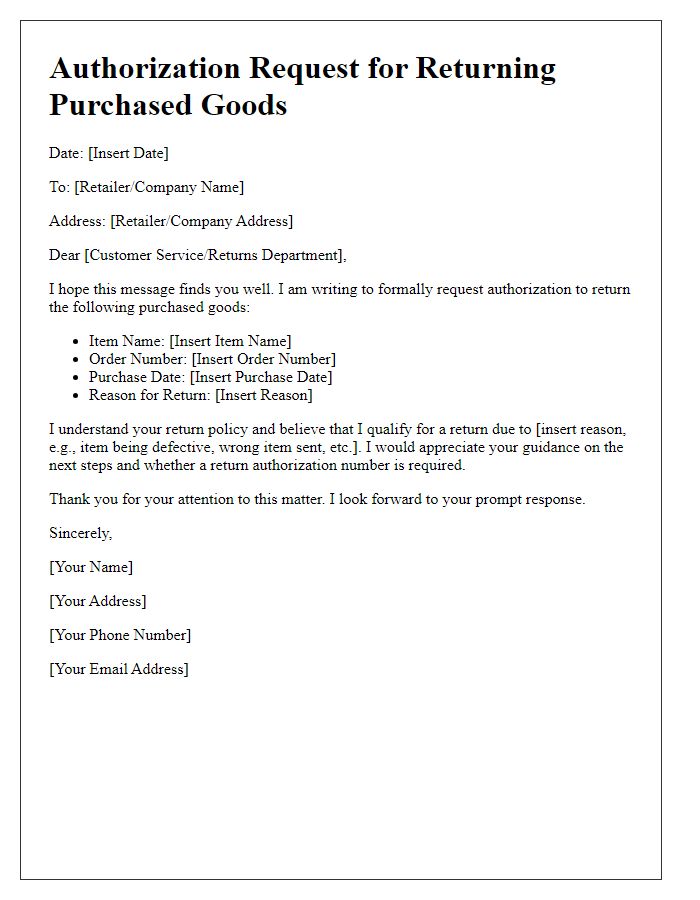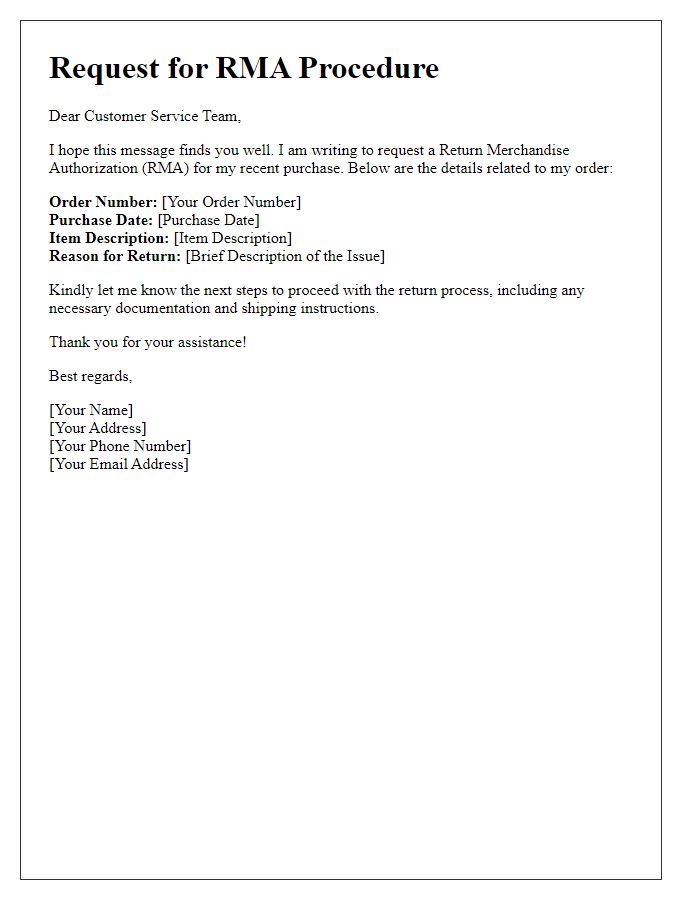Are you looking to simplify the return process for your products? A well-crafted Return Merchandise Authorization (RMA) letter can make all the difference in ensuring a seamless transaction. It's essential to communicate clearly to avoid any misunderstandings and to expedite the return process. Join us as we explore an easy-to-follow RMA letter template that can help you navigate returns like a pro!

Sender and recipient information
To obtain a Return Merchandise Authorization (RMA) number, it is essential to include sender and recipient details for proper processing. Sender information should include full name, address with city and zip code, email address, and phone number. Recipient information typically comprises the name of the company or department handling returns, their return address, and relevant contact information, including email and phone. Accurate details ensure smooth communication regarding the return process, minimize delays, and enable efficient tracking of the returned merchandise for proper resolution.
Item details and reason for return
A return merchandise authorization (RMA) is essential for managing product returns in retail. Detailed item information is crucial, including the product name, model number, and purchase date. Common reasons for returning merchandise include defects, incorrect items sent, or dissatisfaction with the quality. Clear communication regarding the reason for the return helps the return process. Return policies, such as time frames (typically 30 days from receipt), also play a significant role in ensuring a smooth return experience. Resellers or manufacturers require the RMA number, usually assigned upon approval, to process returned goods effectively.
RMA number and return instructions
A Return Merchandise Authorization (RMA) number is essential for customers who wish to return products, ensuring streamlined processing and tracking of returns. When approaching the return process, include specific instructions such as packaging the item securely to avoid damage during transit, using the original packaging when possible, and labeling the return shipment clearly with the assigned RMA number. Customers should also obtain a tracking number for their return shipment to monitor its status and ensure timely processing upon receipt at the designated return center. Information regarding the return timelines, typically 30 days from the purchase date, and any conditions that may apply for refunds or exchanges should be clearly stated to avoid confusion.
Return policy and compliance
A Return Merchandise Authorization (RMA) process is essential for ensuring compliance with return policies. Retailers often require customers to request an RMA for returns of items such as electronics, clothing, and appliances. Clear guidelines typically state that the request must occur within a specific period, often 30 days from the purchase date. This timeframe guarantees that customers return products in acceptable condition, maintaining quality standards. RMA numbers facilitate tracking of returned items, essential for inventory management. When generating RMAs, retailers may include information about the item, such as model numbers or serial numbers, and specify conditions for acceptance, like original packaging. Following the RMA process not only streamlines returns but also fosters a satisfactory customer experience aligned with company policies.
Contact information and follow-up steps
A Return Merchandise Authorization (RMA) process typically requires customers to provide specific contact information when initiating a return for defective or unwanted products. Essential details include the customer's full name, email address, phone number, and mailing address, which help facilitate communication. Customers must also describe the item, including details like the product name, model number, and purchase date, to ensure accurate processing. Following submission, customers should expect prompt acknowledgment of their return request, along with specific steps to package and ship the item back to the retailer. Returning items may require tracking information for verification purposes, and maintaining copies of communications can assist in tracking the status of their return. The final resolution often involves a refund, exchange, or store credit depending on the company's policies outlined in their Return Policy document.













Comments